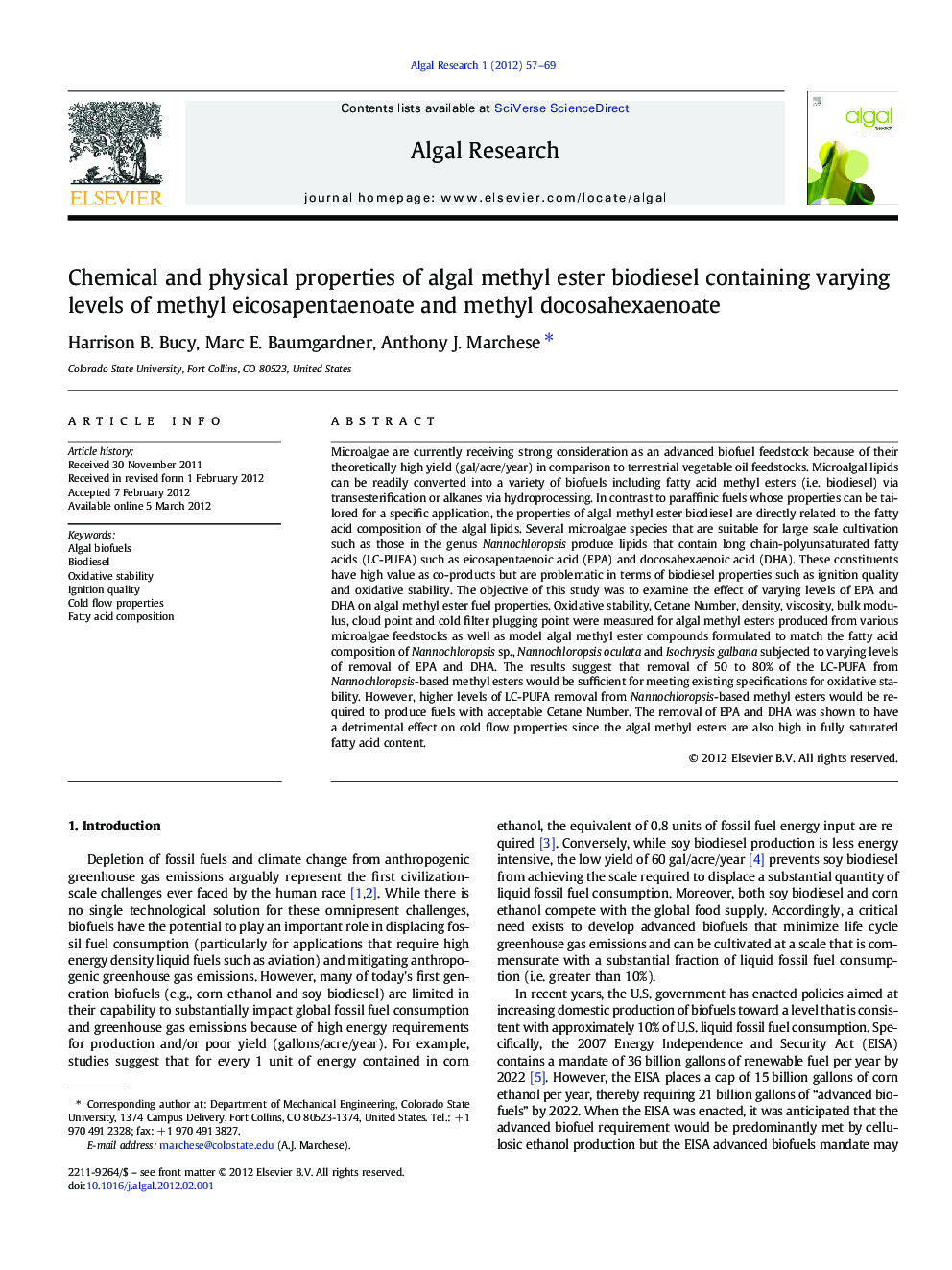| Article ID | Journal | Published Year | Pages | File Type |
|---|---|---|---|---|
| 10687541 | Algal Research | 2012 | 13 Pages |
Abstract
Microalgae are currently receiving strong consideration as an advanced biofuel feedstock because of their theoretically high yield (gal/acre/year) in comparison to terrestrial vegetable oil feedstocks. Microalgal lipids can be readily converted into a variety of biofuels including fatty acid methyl esters (i.e. biodiesel) via transesterification or alkanes via hydroprocessing. In contrast to paraffinic fuels whose properties can be tailored for a specific application, the properties of algal methyl ester biodiesel are directly related to the fatty acid composition of the algal lipids. Several microalgae species that are suitable for large scale cultivation such as those in the genus Nannochloropsis produce lipids that contain long chain-polyunsaturated fatty acids (LC-PUFA) such as eicosapentaenoic acid (EPA) and docosahexaenoic acid (DHA). These constituents have high value as co-products but are problematic in terms of biodiesel properties such as ignition quality and oxidative stability. The objective of this study was to examine the effect of varying levels of EPA and DHA on algal methyl ester fuel properties. Oxidative stability, Cetane Number, density, viscosity, bulk modulus, cloud point and cold filter plugging point were measured for algal methyl esters produced from various microalgae feedstocks as well as model algal methyl ester compounds formulated to match the fatty acid composition of Nannochloropsis sp., Nannochloropsis oculata and Isochrysis galbana subjected to varying levels of removal of EPA and DHA. The results suggest that removal of 50 to 80% of the LC-PUFA from Nannochloropsis-based methyl esters would be sufficient for meeting existing specifications for oxidative stability. However, higher levels of LC-PUFA removal from Nannochloropsis-based methyl esters would be required to produce fuels with acceptable Cetane Number. The removal of EPA and DHA was shown to have a detrimental effect on cold flow properties since the algal methyl esters are also high in fully saturated fatty acid content.
Related Topics
Physical Sciences and Engineering
Energy
Renewable Energy, Sustainability and the Environment
Authors
Harrison B. Bucy, Marc E. Baumgardner, Anthony J. Marchese,
